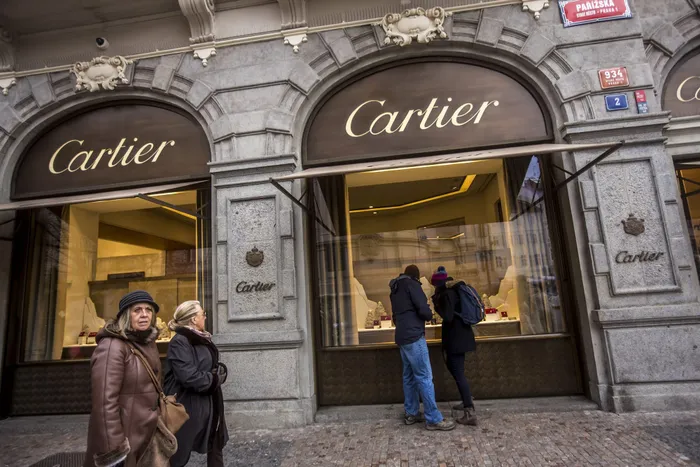Navigating the changing landscape of luxury retail: a market analysis

Pedestrians look at the window display of a Cartier luxury store, a unit of Richemont. Photo: Martin Divisek/Bloomberg
By Junaid Bray
The luxury goods industry is underpinned by long-term structural growth drivers. Rising wealth levels in emerging market economies such as China, India and the Middle East have driven growth, supported by demand from mature developed markets such as the US and Europe. Despite the long-term secular growth underpin, the industry is subject to cyclicality over the short term, driven by wealth effects and consumer appetite for luxury goods, especially amongst aspirant luxury shoppers.
From surge to slump
The Covid-19 lockdowns resulted in a boom period for the luxury goods sector as captive consumers, unable to travel and sitting on excess savings, splurged on luxury goods. Strong demand, in addition to the inflationary environment, resulted in aggressive price increases from the luxury goods companies.
The subsequent consumer slowdown, exacerbated by high inflation and higher interest rates, in addition to several years of excessive price increases has resulted in a decline in demand for luxury goods, due in part to diminished affordability, particularly amongst aspirant luxury consumers. This has been exacerbated by the dramatic slowdown in China, which has been the strongest growth driver for luxury goods over the past two decades. China accounts for around 20-30% of luxury demand amongst larger luxury goods companies.
Winners emerge as the tide recedes
As the famous Warren Buffett saying goes, “Only when the tide goes out do you discover who's been swimming naked”. The slowdown has separated the higher quality luxury companies from their weaker peers. Hermes and Ferrari are examples of the best quality luxury companies where demand continues to exceed supply of products, which is a sign of true luxury. (Even though Ferrari is an automobile manufacturer, it shares more in common with luxury goods companies than a typical auto manufacturer.)

Richemont: a testament to resilience
Richemont, which has a secondary listing on the JSE, has also demonstrated the high-quality nature of its core jewellery maison business, which accounts for over 80% of group profits. Although Richemont’s specialist watchmakers’ division has seen a sharp decline in sales and profits, the jewellery maisons have displayed resilience. The core brands, which many will be familiar with, are Cartier and Van Cleef & Arpels.


Balancing risk and reward
Given the cyclicality and high beta nature of the sector, the sector tends to be volatile, creating opportunities to invest in great companies. Given high margins and strong cash flows, the larger companies are considered to be high quality and tend to trade at premium valuations with price to earnings (PE) typically above 20X. With quality companies, one needs to be cautious of overpaying, and we have seen many examples of fallen angels. (The high PE ratings may hold, but when there are earnings downgrades, the share prices tend to follow.) The sector tends to overreact to industry news flow and we have used sell-offs that we have deemed to be overdone to accumulate positions in Richemont in our funds, as we did at the beginning of 2024. This has resulted in generous returns and alpha for our clients.
We continue to monitor the sector for opportunities to invest in companies that are high quality and which offer attractive risk-reward profiles.
Junaid Bray is a portfolio Manager at Laurium Capital, part of the PPS Stable Growth Fund investment team
BUSINESS REPORT